#Verna Felton
Explore tagged Tumblr posts
Photo



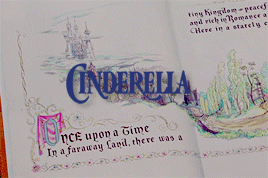


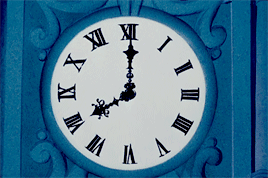
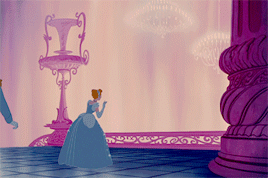
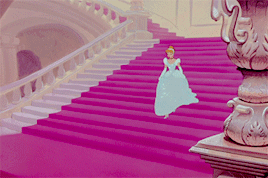
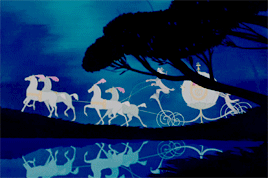
Cinderella (1950)
#Cinderella#disneyedit#filmedit#Ilene Woods#Eleanor Audley#Verna Felton#Mike Douglas#Hamilton Luske#Wilfred Jackson#Clyde Geronimi#my gifs#movie gifs
1K notes
·
View notes
Text

Verna Felton, actor/Disney voice legend, was #botd in 1890
Elephant Matriarch/Mrs. Jumbo in DUMBO (1941)
Fairy Godmother in CINDERELLA (1960)
Queen of Hearts in ALICE IN WONDERLAND (1951)
Aunt Sarah in LADY AND THE TRAMP (1955)
Fora in SLEEPING BEAUTY (1959)
Winifred in THE JUNGLE BOOK (1967)
54 notes
·
View notes
Text

53 notes
·
View notes
Text



The Jungle Book (1967, Wolfgang Reitherman)
21/09/2024
#the jungle book#animation#1967#wolfgang reitherman#rudyard kipling#List of Walt Disney Animation Studios films#walt disney#mowgli#feral child#India#bagheera#baloo#shere khan#bill peet#phil harris#sebastian cabot#george sanders#louis prima#sterling holloway#J. Pat O'Malley#Verna Felton#united states#sherman brothers#the bare necessities#germany#the jungle book 2#jon favreau#orphan#jungle
14 notes
·
View notes
Note
If there was a Disney adaptation of the first Wizard of Oz book released in the 50s, I nominate Verna Felton to be the voice of Theodora aka the Wicked Witch of the West!
Oh she'd likely do a very good job had things gone that way. She did excellent work in so many classic Disney movies 👌
4 notes
·
View notes
Text


66 years ago today Sleeping Beauty released in theaters!!!
#Disney#🩷💙💚#Sleeping Beauty#Disney Princess#Clyde Geronimi#Eric Larson#Wolfgang Reitherman#Les Clark#Erdman Penner#Joe Rinaldi#Winston Hibler#Bill Peet#Ted Sears#Ralph Wright#Milt Banta#Charles Perrault#Mary Costa#Bill Shirley#Eleanor Audley#Verna Felton#Barbara Luddy#Barbara Jo Allen#Taylor Holmes#Bill Thompson#Roy M. Brewer Jr.#Donald Halliday#George Bruns
2 notes
·
View notes
Text










Picnic (1955) Joshua Logan
June 25th 2023
#picnic#1955#joshua logan#william holden#kim novak#susan strasberg#rosalind russell#betty field#arthur o'connell#verna felton#cliff robertson#nick adams#raymond bailey#shirley knight
10 notes
·
View notes
Photo
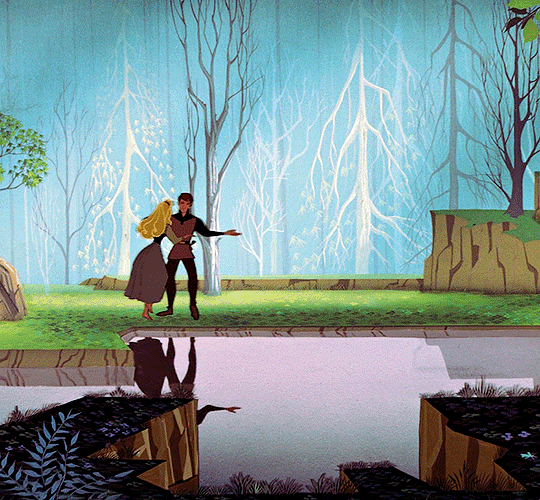
SLEEPING BEAUTY 1959
The princess shall indeed grow in grace and beauty, beloved by all who know her. But. Before the sun sets on her 16th birthday, she shall prick her finger - on the spindle of a spinning wheel - and die!
#sleeping beauty#1959#mary costa#bill shirley#eleanor audley#verna felton#barbara luddy#barbara jo allen#taylor holmes#bill thompson#marvin miller
15 notes
·
View notes
Text
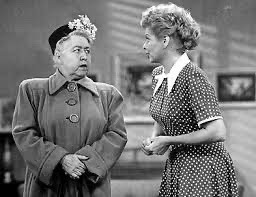
Afraid? Us? Yes. But that shouldn't stop you listening to, "Lucy Hires a Maid," out now, wherever you listen to podcasts!
14 notes
·
View notes
Photo
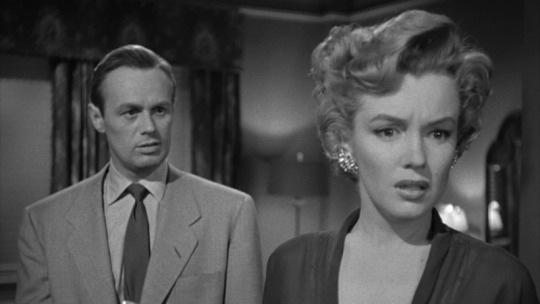
Don’t Bother to Knock (1952)
On social media, there are certain actors from Golden Age Hollywood whose imagery, on occasion, seeps through the Internet’s algorithmic modern biases. Too often, those posts are from individuals who have never seen such actor’s movies. Chief among those actors are James Dean, Marlon Brando, Audrey Hepburn, and Marilyn Monroe. Against the grain, I hold that James Dean’s posthumous legacy has overshadowed three performances I am no fan of and Brando’s airbrushed reputation leaves him overvalued in the popular written histories of American cinema. By contrast, Audrey Hepburn’s standing in modern times feels just about correct (although more people should seek out her films beyond 1953’s Roman Holiday and 1961’s Breakfast at Tiffany’s). For Marilyn Monroe, a recent film like Andrew Dominik’s Blonde (2022) follows decades of works that have exploited her image – oftentimes simplifying her to a tragic sex symbol. Monroe, of the four aforementioned Old Hollywood actors who show up from posts from non-film buffs, is the only one whose talents I consider underrated.
There is no better showcase of her early-career dramatic abilities than in Roy Ward Baker’s film noir Don’t Bother to Knock, released by 20th Century Fox. Up to this point, Monroe had starred in more than a dozen films in supporting roles. In a time when actors and film crewmembers were contracted to a studio, Fox loaned Monroe early in her career to Columbia, Metro-Goldwyn-Mayer (MGM), and most recently to RKO. Fox executive Darryl F. Zanuck was still not entirely sure what to make of her, despite a strong performance in RKO’s Clash by Night (1952). Offering Monroe the lead role in Don’t Bother to Knock, Zanuck gave her the opportunity to prove herself (in addition to ascertaining British director Roy Ward Baker’s skills for his first Hollywood picture). Wary of the risks of pushing an actress to her first lead role as well as working with an unfamiliar director, Zanuck allowed a budget that, by Fox’s standards in the early ‘50s, was a trifle. Yet, because of these limitations, Don’t Bother to Knock is a decent noir and a solid Marilyn Monroe vehicle.
One night in a New York City hotel, airline pilot Jed Towers (Richard Widmark, one of Fox’s brightest stars at this time) approaches his ex-girlfriend Lyn Lesley (Anne Bancroft in her film debut), the hotel club’s singer. Lyn broke up with Jed recently by letter, and explains to her ex that her reasoning is due to his attitude. Jed, flustered, heads back to his room. On the same floor Jed is on but across the air shaft, elevator operator Eddie Forbes (noir mainstay Elisha Cook Jr.) introduces his niece Nell (Marilyn Monroe) to guests Peter (Jim Backus) and Ruth Jones (Lurene Tuttle). Nell will serve as babysitter to the Jones’ daughter, Bunny (Donna Corcoran), while the couple attend a reception downstairs. All is set in motion when Jed first sees Nell across the way.
Also in the cast is Don Beddoe as Mr. Ballew. And Disney fans might recognize Verna Felton – the Elephant Matriarch in Dumbo (1941) and the Fairy Godmother in Cinderella (1950), among others – playing Mr. Ballew’s meddling wife, Emma.
Don’t Bother to Knock’s categorization as a film noir comes from its storyline, rather than its visuals. Bar one scene involving Jed believing someone on the other side of the room to be asleep, the film lacks the shadowy aesthetic one comes to expect from noir. Shot and lit conventionally, Don’t Bother to Knock never quite escapes the fact it is obviously soundstage-bound. The small number of different locations for the film’s various scenes also does not help matters. From a perspective of style, this is a disappointing effort from cinematographer Lucien Ballard, who had ample experience in film noir by this point – see The Lodger (1944) and The House on Telegraph Hill (1951) in this collaboration with Baker.
Yet it is the two central performances that elevate the material. The audience is witnessing Marilyn Monroe before sporting her platinum blonde locks. The natural brunette keeps her natural hair color for this film; not truly transforming into the Marilyn that most casual film audiences know about until Niagara (1953). Unlike the typecast dumb blonde roles that she received later in her career, her role in Don’t Bother to Knock is neurotic, restless, and wide-eyed not in a sexual way. Monroe brings a level of internal strife strewn across her face, a measured gait, and a nervous avoidance of eye contact with Richard Widmark and other actors opposite her. To yours truly, having seen Monroe in so many other roles, it was difficult for me to connect her speaking voice – high-pitched, like a streetwise Snow White living in urban America – to this character’s neuroses. She does not attempt much modification in her delivery or register, whether in this role or others. But given that this is early in her career, this can slide. It is otherwise a solid turn that justifies Zanuck’s supposed gamble on her as a lead actress.
After his debut in Henry Hathaway’s Kiss of Death (1947) for 20th Century Fox, Richard Widmark became one of the studio’s prize actors. His role as the sneering, misogynistic, and psychopathic Tommy Udo brought instant notoriety, as well as spawning fan clubs in American colleges and universities known for their sexism. Early in his Fox career, he would largely play villains, but cinephiles knowledgeable of classic Hollywood know that Widmark was equally capable in more honorable roles. In Don’t Bother to Knock, his Jed sits somewhere squarely in the middle – deeply unlikeable, abrasive, yet with glimmers of compassion and helpfulness. That Tommy Udo sneer finds its way onto Widmark’s face, if only for a few passing moments, due to the pain of his recent separation from Anne Bancroft’s Lyn. Despite Jed’s less-than-virtuous qualities, the viewer – because of the situation that transpires between him and Nell – will find themselves rooting for that elusive happy ending in a film noir. Widmark’s performance in Don’t Bother to Knock is not as remarkable as that in Kiss of Death or No Way Out (1950), but he complements Monroe’s performance wonderfully.
Adapted from the little-read and slender book Mischief by Charlotte Armstrong, Don’t Bother to Knock received its adapted screenplay treatment from Daniel Taradash (1953’s From Here to Eternity, 1955’s Picnic). The pulpy screenplay takes place over a few evening hours, refusing to show its entire hand until a little more than halfway through. Eventually, discussion and a depiction mental illness – as it was understood in the 1950s – becomes prominent in the film. By today’s standards, the script’s understanding of mental illness is deficient. It is used more as a plot device rather than something to inspire dialogue about how the individual in question is coping or how the mental health professional have utterly failed them. Some might argue this might detract from the narrative at-large (and noir is very much a narrative-driven subgenre), but I contend that noir with a social conscience only adds depth to the noir tradition.
Director Roy Ward Baker and co-star Richard Widmark, initially frustrated with Monroe’s habits – requiring acting coach, Natasha Lytess, to be on set constantly; frequently asking to take breaks between takes; and constant tardiness – changed their minds when viewing the film’s rushes (the raw unedited footage played back for the director and editor after the film’s shoot is completed for the day). Monroe brought a rawness appropriate for her role in Don’t Bother to Knock, and her inexperience contributed to her believability in the role. As Don’t Bother to Knock made its theatrical premiere in July 1952, some of the nation’s leading movie critics only added to Darryl F. Zanuck’s unease about framing Marilyn Monroe as a lead actress. Ignoring the plaudits from the audiences, Baker, Widmark, and less-prominent critics, Zanuck instead fixated on the likes of The New York Times’ Bosley Crowther claiming that, “Monroe is being groomed by Twentieth Century-Fox for razzle-dazzle stardom… if they also expect her to act, they’re going to have to give her a lot of lessons under an able and patient coach.”
These reviews (that Zanuck spent too much time thinking about) from Crowther and his fellow contemporaries drip with condescension, misogyny, and language more appropriate for a gossip column. For Monroe – only in her mid-twenties and whose shyness and insecurity followed her through all of her life – one can only imagine how hurtful these words and Zanuck’s perceptions must have been. The crafting of the culturally dominant image of Monroe – as a voluptuous and ditzy blonde plaything with no interiority – was beginning to take shape. In the final year that any American could reasonably not have known the name of Marilyn Monroe, Don’t Bother to Knock represents the end of her status as a Hollywood afterthought.
My rating: 7/10
^ Based on my personal imdb rating. My interpretation of that ratings system can be found in the “Ratings system” page on my blog (as of July 1, 2020, tumblr is not permitting certain posts with links to appear on tag pages, so I cannot provide the URL).
For more of my reviews tagged “My Movie Odyssey”, check out the tag of the same name on my blog.
#Don't Bother to Knock#Roy Ward Baker#Richard Widmark#Marilyn Monroe#Anne Bancroft#Donna Corcoran#Jeanne Cagney#Lurene Tuttle#Elisha Cook Jr.#Jim Backus#Verna Felton#Don Beddoe#Daniel Taradash#Charlotte Armstrong#Lucien Ballard#Darryl F. Zanuck#Lionel Newman#TCM#My Movie Odyssey
13 notes
·
View notes
Text
Cinderella (1950)
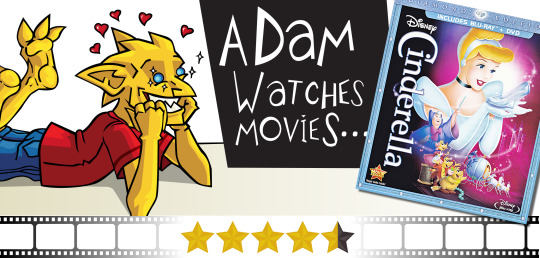
Sumptuously animated, with iconic images and memorable songs, Cinderella exemplifies the golden age of Disney Animation. Adults will be filled with warm nostalgia while watching - even if they didn’t grow up with the film. Kids will be delighted. Smart choices throughout make it an old-fashioned picture with lasting appeal
Orphaned and now living with her cruel stepmother (voiced by Eleanor Audley) and two wicked stepsisters (voiced by Helene Stanley and Rhoda Williams), Cinderella (voiced by Ilene Woods) is now a servant in her own home. Though forced to perform endless chores and suffer unjust punishments, Cinderella never loses hope that someday her dreams will come true. When the King (voiced by Luis van Rooten) organizes a royal ball to find a suitable wife for his son, Lady Tremaine becomes determined to prevent Cinderella from attending.
Cinderella is very much a classic fairy tale. The story is timeless and easy to latch onto. It’s also very much a product of its time. The protagonist is not an active participant in their own story. Today, a strong female character might use her wits to get herself out of a jam or just punch the bad guy in the face. It’s no spoiler to tell you that Cinderella’s salvation is kind of just served to her on a platter through the magic of her fairy godmother (voiced by Verna Felton)… but that's oversimplifying it. The story’s message is that even if others treat you like dirt, you shouldn’t hold a grudge and remain kind. The moral is taken to an extreme but it’s a good lesson to teach - far more applicable to real life than you'd think.
This is a rather straightforward retelling of the fairytale by Charles Perrault but key additions and choices make it stand out. First, the animated medium. Every frame of Cinderella is so crisp it looks like it was made yesterday. The colours are wonderful. The characters are delightfully expressive. The movements are smooth, everyone is always on-model and it’s a delight to simply watch the story play out. The chateau is filled with all sorts of details that make it feel like it used to be majestic but is slowly rotting away, like the huge mouse population that moves through its corridors through endless - and varied - secret passages. You can tell the artists had a blast coming up with new ways for Jaq, Gus (voice by Jimmy MacDonald) and the other mice to make their way from one room to another.
Another memorable aspect of Cinderella is the musical numbers. Ask anyone. They’ll tell you Bibbidi-Bobbidi-Boo is the best piece but over the years So This is Love has grown on me as much as A Dream Is a Wish Your Heart Makes. Special attention should also be given to Oh Sing Sweet Nightengale, in which Cinderella sings harmony with herself in a clever manner that also utilizes the animated medium to its full potential.
Cinderella is a lovely person. She’s meek but kind and patient, with neverending empathy for those around her. Seeing her constantly beaten down breaks your heart. While she could be described as a bit bland as far as heroines go, the same can’t be said about the film's chief villain, Lady Tremaine. Modeled after and voiced by the same woman who would later bring Maleficent to life, she steals every scene she’s in. You hate her but wouldn't dare look away for a moment.
There is one scene, in particular, that stood out to me during this viewing. It’s not a big memorable moment but it exemplifies the care that was put into the film. In it, Cinderella walks up a flight of stairs with a tea set on a tray. She's being followed by Lady Tremaine’s cat, Lucifer, who knows a mouse is hiding beneath one of the cups. The cat is about to get his prey when Cinderella’s shoe suddenly slips off. She turns around to put it back on, spinning the tray and making Lucifer grab the wrong cup in the process. His bewilderment makes us laugh and the scene also foreshadows the famous slipper that will be left behind later in the film.
Cinderella is what you picture when you hear the words “Classic Disney”. it’s gorgeous, contains plenty of laughs, and offers just enough heartbreaks to keep you in suspense until the happy ending you've been promised. The songs are memorable, as are the characters - even if sometimes they’re little more than archetypes. Not every movie should be like Cinderella but if you want to tell an old fairytale, do it like this. (On Blu-ray, March 12, 2021

#cinderella#movies#films#movie reviews#film reviews#wilfred jackson#hamilton luske#clyde geronimi#william peet#ted sears#homer brightman#kenneth anderson#erdman penner#winston hibler#harry reeves#joe rinaldi#ilene woods#eleanor audley#verna felton#claire du brey#rhoda williams#james macdonald#helene stanley#luis van rooten#don barclay#1950 movies#1950 films#disney movies#disney films
4 notes
·
View notes
Text

(Original caption) Famous face - Of course, you know her. She's Verna Felton, favorite comedienne in television and motion pictures. Not to mention being the Honorary Mayor of North Hollywood and an excellent cook as she demonstrates here. She is preparing to make Potato Gnocchi, putting the potatoes through the ricer first.
26 notes
·
View notes
Text
Don't Bother to Knock

I would guess that most of the supporting players in Roy Ward Baker’s DON’T BOTHER TO KNOCK (1952, Criterion Channel, TCM, YouTube, On Demand) are better actors than leading lady Marilyn Monroe. In her film debut, Anne Bancroft, as a hard-luck saloon singer trying to break it off with pilot Richard Widmark because he doesn’t have a heart, makes a lot out of an underwritten role and is a knockout lip-synching her songs (dubbed by Eve Marley). But none of them command the camera the way Monroe does (Bancroft would learn to later in her career). Monroe’s role as a mentally disturbed woman whose elevator operator uncle (Elisha Cook, Jr.) gets her a job babysitting at his hotel is the Hollywood version of insanity, which basically means she can do anything they need her to do — dress up in her employers’ things, bully the little girl, mistake Widmark for her dead fiancé — as long as it moves the plot. And what a plot! Basically, Monroe’s Nell suffers dreadfully so Widmark can become a better person. I suppose if you remade the film today she’d have to be gay or a person of color. Anyway, Monroe has effective moments, but it’s all bits. The character as written is an array of tics anyway, but because of Monroe’s bad memory, nerves and reliance on acting coach (and possibly lover) Natasha Lytess, she can’t tie it together. There’s no throughline to her performance. Yet it’s fascinating to see how easily all the mannerisms that made her a star in comedies lend themselves to her role as a psychotic. With all the problems dealing with Monroe, Baker can’t give the film much tension, though there’s one effective scene with the little girl (Donna Corcoran) leaning out the hotel window to spy on other tenants as Monroe fights the urge to push her. Baker and cinematographer Lucien Ballard get some effective shots, particularly some off-kilter close-ups of Monroe. But they also have to include some cheesecake, which now feels exploitative. Widmark is good as ever and makes his character arc clear, and there are nice bits from Gloria Blondell as the hotel lounge’s photographer, Willis Bouchey as the bartender and Verna Felton as a nosy hotel resident. The film also has a terrific score by Lionel Newman, whose opening title music promises a better movie than this one.
5 notes
·
View notes
Text

1959.
The Beatnik episode of December Bride.
37 notes
·
View notes
Text
The Voice of Verna Felton
The final screen credit of Verna Felton (1890-1966), as Winifred the Elephant in Walt Disney’s The Jungle Book (1967) makes a good touchstone for exploring the rest of her career. She specialized in bellowing, blustery biddies on stage, in radio, TV and film, both live action and animated. Disney loved her, and also employed her as a voiceover actress in Dumbo (1941), Cinderella (1950), Alice in…

View On WordPress
2 notes
·
View notes
